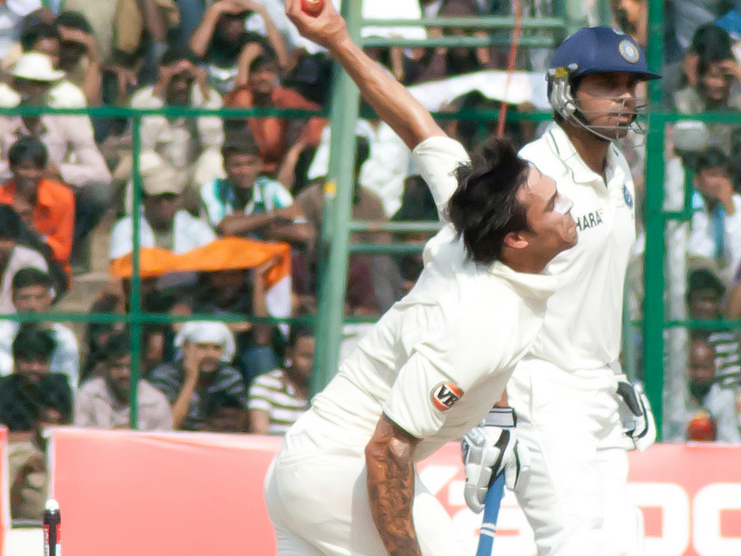|
 Ever since Jeff Thompson showed the power of a ‘slingy’ bowling action, there has been no debate that it is a devastating method for fast bowlers. Yet coaches worldwide persist with the traditional action. This is because coaches are not taught how to put sling into an action. Ever since Jeff Thompson showed the power of a ‘slingy’ bowling action, there has been no debate that it is a devastating method for fast bowlers. Yet coaches worldwide persist with the traditional action. This is because coaches are not taught how to put sling into an action.
Many would argue that it’s too unorthodox or can only be developed naturally. But at PitchVision Academy we disagree, which is why we are going to show you how to coach a slingy action into yourself or others.
What is a slingy action?
Of course, to know how to get one, we need to know what the difference is between ‘slingy’ and ‘orthodox’.
You’ll be surprised to learn there is hardly any difference at all.
To give you a frame of reference, let’s use Mitchell Johnson as an example of a 21st century bowler with a slingy action. Take a look at his delivery stride here.
As you can see from the picture there are more similarities than differences:
- The front leg is acting as a brace or block
- The back leg is driving through with the back foot still on the ground
- The hips and shoulders are pointing down the wicket towards the batsman
- The chest is well driven forward
- The non-bowling arm has been driven out and down and is on the way to rotating the shoulders 180 degrees in the follow through.
- The head is driving towards the target.
All of these points are found in classical and unorthodox bowlers at the highest level.
Going back to the picture, the main two differences are:
- The bowling arm is much lower, heading towards 10 o’clock of you imagine a high arm position to be 12 o’clock.
- There is a greater delay in the action before the ball is let go, causing a huge stretch and co-contraction of the muscles. This is what the sling itself looks like.
So now we know that the basics are the same across any fast bowler’s action, it makes it much easier to focus on the differences.
Let’s assume you know how to do the basics well (and if you don’t click here to learn) and focus on the main differences.
Low bowling arm
The low bowling arm is a red herring.
Although Johnson and Malinga both show these traits, it’s not a requirement for a slingy action. Jeff Thomson had his arm at almost 12 o’clock at the point of release.
As Johnson has shown, a low arm increases the chance of inaccuracy. This is because you are no longer getting your shoulders in a straight line down the wicket and so need exceptional timing of the release of the ball to be accurate. A higher arm gives you a greater margin for error.
Of course, international bowlers with a low arm would never be able to change their technique at an advanced level. But a young cricketer still learning the muscle memory can have a slingy action and a high arm.
Delayed bowling arm
This is the real trick to a slingy action.
A slingy arm has a longer delay between the back foot landing and the arm coming over. When the arm does come over it appears to slingshot like an elastic band.
This is because that is exactly what it is doing. You can see how stretched the muscles are at front foot landing in Malinga here.
When you stretch that much the elastic nature of the upper body muscles store up the energy and release it as the contract back again and bring the arm over.
Ping. Like an elastic band.
The feeling of the stretch, ping is all important and it can be drilled with a stump and a friend:
In this drill, used by Ian Pont in his online coaching course How to Bowl Faster, the bowler is recreating the feel of stretching or pulling the muscles while driving the chest forwards as far as possible.
Move on to bowling at a slow pace without a run up to keep that feeling of being a catapult or a bow, storing up energy ready to fire the arrow at the target. Get the feel then gradually increase the pace.
The older a bowler is, the harder it becomes to learn this stretch reflex, but there is no reason why it can’t be taught even to very young kids. Those aged 9 and above will take to it easily and end up bowling much faster than their peers.
Discuss this article with other subscribers
|

.jpg)




.jpg)


